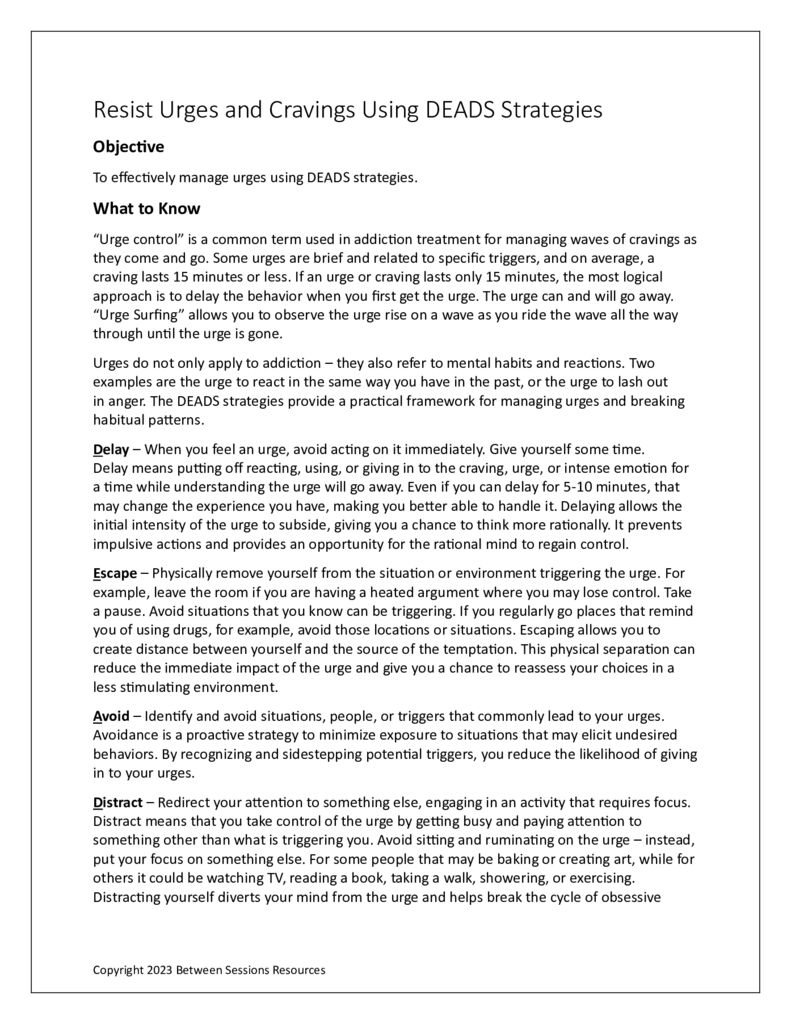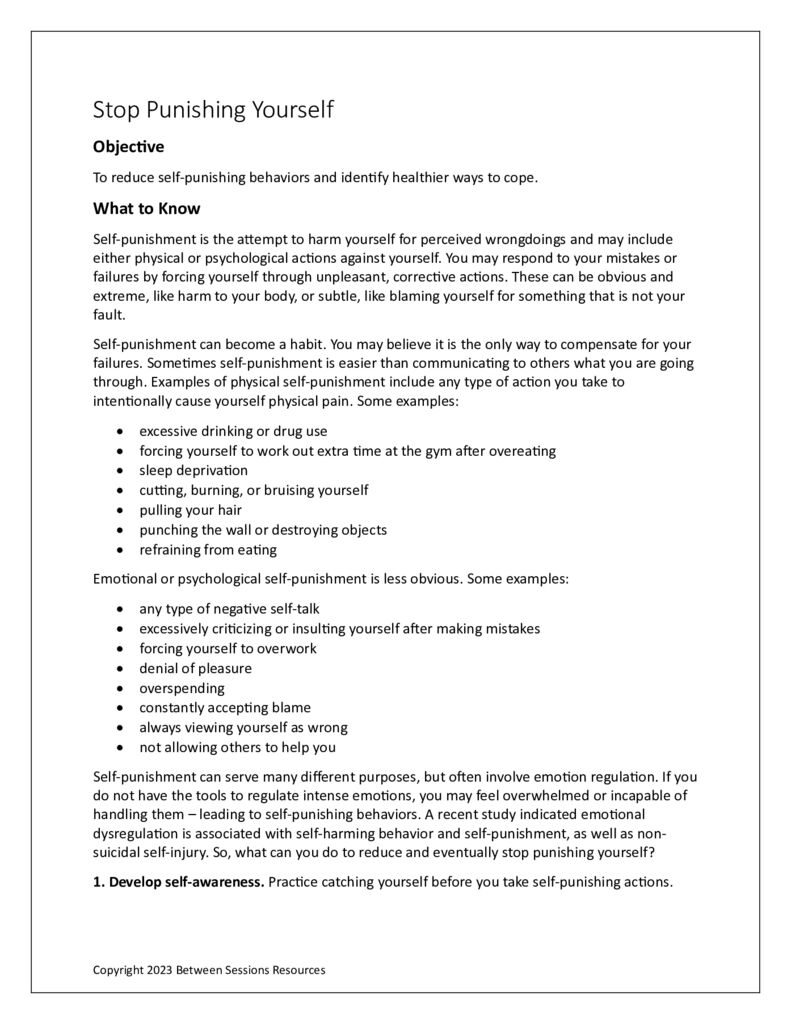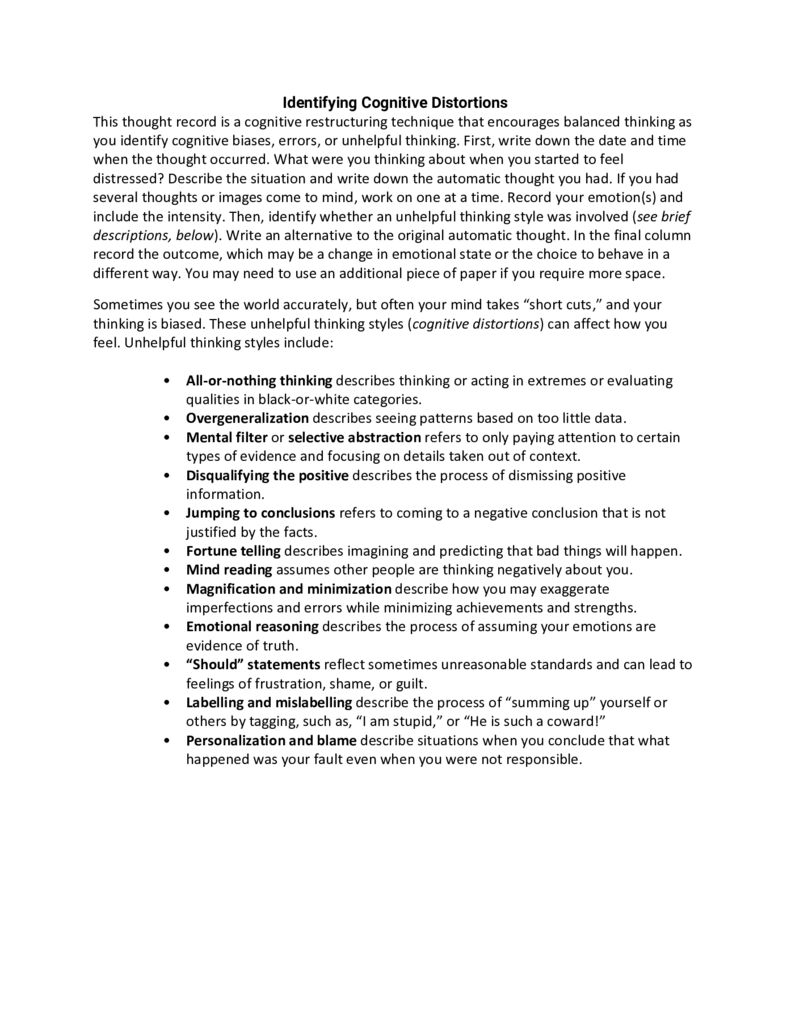This worksheet is designed to help you introduce the concept of defense mechanisms to your clients. Defense mechanisms can include denial, repression, projection, idealization, compartmentalization, and more. (0424. depression, psychodynamic therapy)
This evidence-based scale is part of an international public health initiative involving the assessment of suicidality. Online training in administering the scale is recommended. The scale assesses factors like general clinical status, protective factors, actual attempts, intensity of ideation, and more. (1223, suicide, suicidality, suicide ideation, assessment)
The DEADS strategies provide a practical framework for managing urges and breaking habitual patterns. The acronym stands for delay, escape, avoid, distract, and substitute. This worksheet explains this technique and asks the user to keep track of his or her urges, the strategies used, and the results of using them. (1123. addiction, urges, impulse control)
This workbook has 20 techniques to help people find the motivation they need to change. Motivation is a much more complex issue than most people, involving at least 12 areas of the brain. This workbook goes well beyond popular psychology concepts of visualization and affirmations, using evidenced-based techniques the workbook helps people set goals, increase flow experiences, improve self-efficacy, overcome doubt, and more. (0823. resistance, change, therapeutic alliance)
This assessment is designed to understand the nature of a person’s self-injury including the type of self-injury they engage in, the reasons they hurt themselves, their history of self-injury, and more. (0623, self-injury)
This worksheet teaches people about three systems: the sympathetic nervous system, the parasympathetic nervous system, and the social engagement system. A chart is used to help people identify how they activate each system to develop positive health habits. (0423, trauma, PTSD, body awareness, somatic learning)
This worksheet talks about the various kind of self-punishment including physical and emotional self-punishment. Physical self-punishment includes cutting and burning, to excessive burning, sleep deprivation, and more. Psychological self-punishment can range from not letting others help you when you need it to forcing yourself to overwork. The worksheet offers six strategies to overcome self-punishment including a chart to record healthy coping behaviors. (0122, self-harm, self-injury, negative self-image)
This journal consists of prompts to focus people on the day ahead, including thoughts on gratitude, goals, body and mind, etc. The journal consists of 31 pages for a month’s worth of entries. (1222, journal, wellness, positive psychology)
This worksheet teaches clients the technique of cognitive restructuring. The different kinds of cognitive distortions are explained and then clients are asked to keep a chart where they identify their automatic thoughts and substitute more realistic alternative thoughts. (1222. CBT. cognitive restructuring thought changing)
This 7-column form is designed to help people keep track of the situations and thoughts that cause them distress and create “rebuttals” to thoughts that are dysfunctional. The form is frequently used in CBT therapies for anxiety disorders and depression. (1122, anxiety, exposure therapy, CBT, dysfunctional thinking, emotional regulation)









